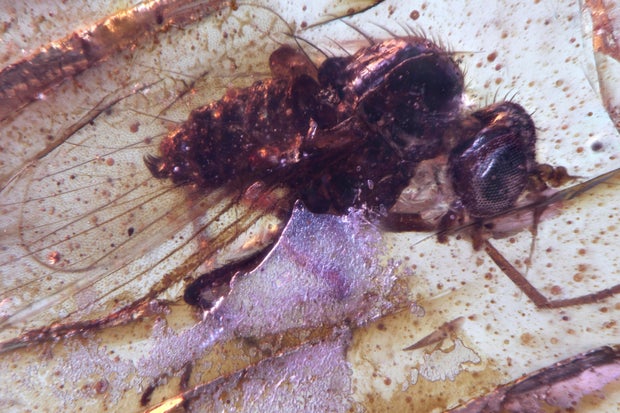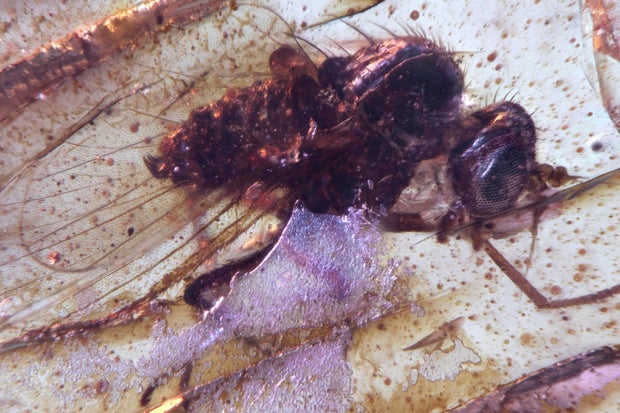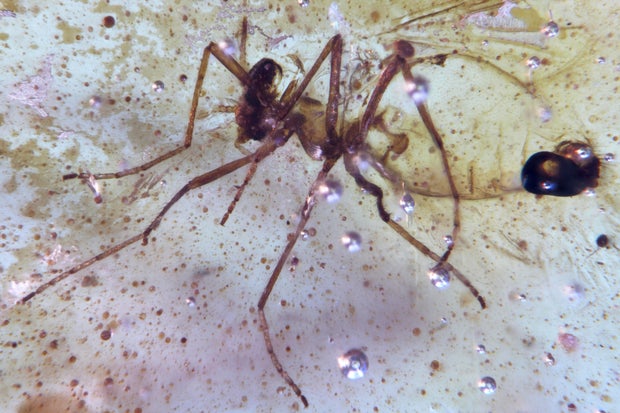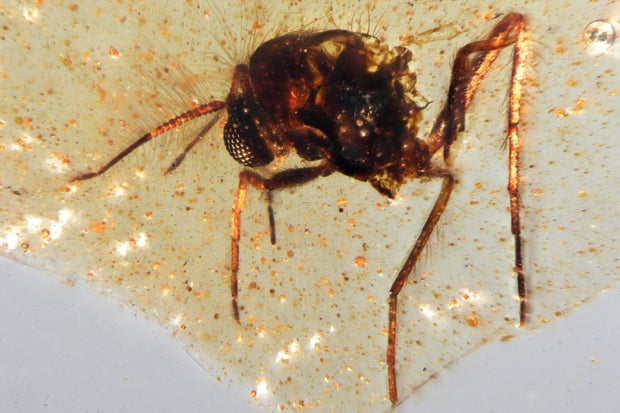
Scientists have made a groundbreaking discovery in South America: prehistoric insects perfectly preserved in amber. These findings offer a unique glimpse into life on Earth during a crucial period when flowering plants were beginning to flourish and diversify. The amber specimens, primarily dating back 112 million years, were unearthed in a sandstone quarry located in Ecuador.
The study, published Thursday in the journal Communications Earth and Environment, details the discovery of at least six distinct types of arthropods. This discovery is particularly significant because the majority of amber deposits from the past 130 million years have been found in the Northern Hemisphere. Finding such a wealth of well-preserved specimens in the Southern Hemisphere, an area once part of the supercontinent Gondwana, is a rare and exciting event for researchers.
Mónica Solórzano-Kraemer/AP
The find represents the first time ancient beetles, flies, ants, and wasps have been identified in fossilized tree resin within South America. These amber pieces are veritable “windows into the past,” offering invaluable insights into the interactions between flowering plants and insects during the age of the dinosaurs. The research team discovered hundreds of amber fragments, some containing not only insects but also pollen and tree leaves, at the Ecuadorian quarry, situated near the Amazon basin.
Two distinct types of amber were identified: a more common variety found near the roots of resin-producing plants and a rarer form created from resin exposed to air. The amber found near the roots did not yield any specimens. This discovery provides compelling evidence that the area was once a “humid, resinous forest ecosystem.”
Mónica Solórzano-Kraemer/AP
“A different kind of forest”
The ancient rainforest, as revealed by the amber’s contents, harbored unique species of ferns and conifers, including the now-uncommon Monkey Puzzle Tree. The current Amazon rainforest is drastically different from the forest that existed during the dinosaurs’ reign. The amber deposits were already known to geologists and miners working at the Genoveva quarry, but it was the persistence of researchers that led to the precise location’s discovery.
Mónica Solórzano-Kraemer/AP
The exposed nature of the quarry has allowed for the easy discovery of amber, which would otherwise be hidden. Further analysis of the amber is planned to deepen the understanding of Cretaceous-era biodiversity, including the roles insects played in the evolution of flowering plants. The exceptional preservation capabilities of amber make it an ideal medium for studying the tiny details of the past. This research highlights a pivotal period, the beginning of the symbiotic relationship between flowering plants and insects, which has become one of nature’s most successful partnerships.




